One of the big highlights of our Newfoundland & Nova Scotia birding trip through Field Guides was a boat trip out to Gull Island. We arrived at Bay Bull, NS on a gray, overcast afternoon and boarded the O’Brian’s Boat Tours ship along with about 40 other passengers. The sea was calm as we headed out of the harbor.
As we were leaving the harbor we came upon an exploratory oil rig. This huge structure was entering port on its own power after being at sea seeking oil by drilling test bores. It’s hard to capture the immensity of this platform in pictures and it was amazing to see it cruising into the harbor (you can see water churning around the legs in the second picture).
Gull Island is the largest of several islands collectively named Witless Bay Islands. The islands are designated as an Important Bird Area (IBA) by the Canadian Government; researchers are allowed on the islands but not tourists like us. Although the bird population numbers below are estimated they give you a sense of the importance of these islands as breeding areas:
Common Murre – 800,000
Razorbill – 500,000
Atlantic Puffin – 600,000
As we made our way out to Gull Island there were lots of these seabirds flying about. Gull Island is a breeding area for Common Murres, where they come to create a nest on the rocky surface and lay their eggs. They only come to land to breed and then spend the rest of the year out at sea. Here is a Common Murre flying toward the island with a fish in its mouth.
On the island the Common Murres gather together around their nests. The white line around its eye is part of their breeding plumage.
There were so many of them flying by I had to get a good BIF shot.
Another resident of Gull Island was the Razorbill. At first glance they look similar to the Common Murre but if you look at their bill you can see that instead of being long, conical and pointed the bill of a Razorbill is blunt and flat. Also note the vertical white line wrapped around its bill and another white line extends from its eye toward the bill.
The Razorbills dive beneath the surface in search of food.
Here you see Common Murres and Razorbills covering the rocky portions of the island. This shot is just a small portion of Gull Island; you can see why the estimated numbers of them are so high!
In the last picture for today you can see where vegetation begins to grow on the island. The rocky area is covered in Common Murres and Razorbills. Can you see what breeds in the leafy green plants? That will be the subject of the next installment.
If you enjoy seeing beautiful pictures of birds from around the world and reading about them Click Here to sign up for our mailing list. Members can post their own GreatBirdPics and learn more about bird photography techniques.
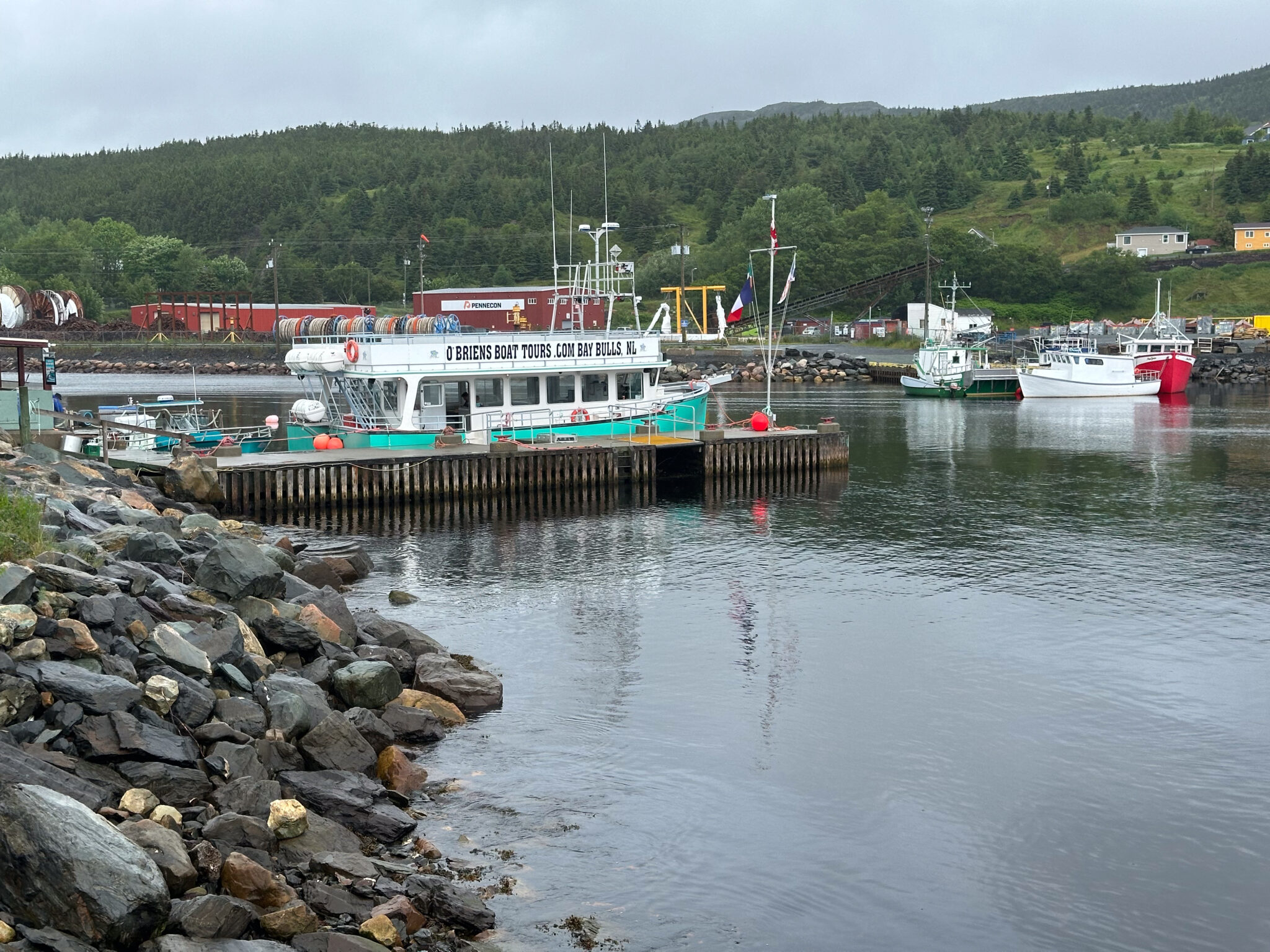


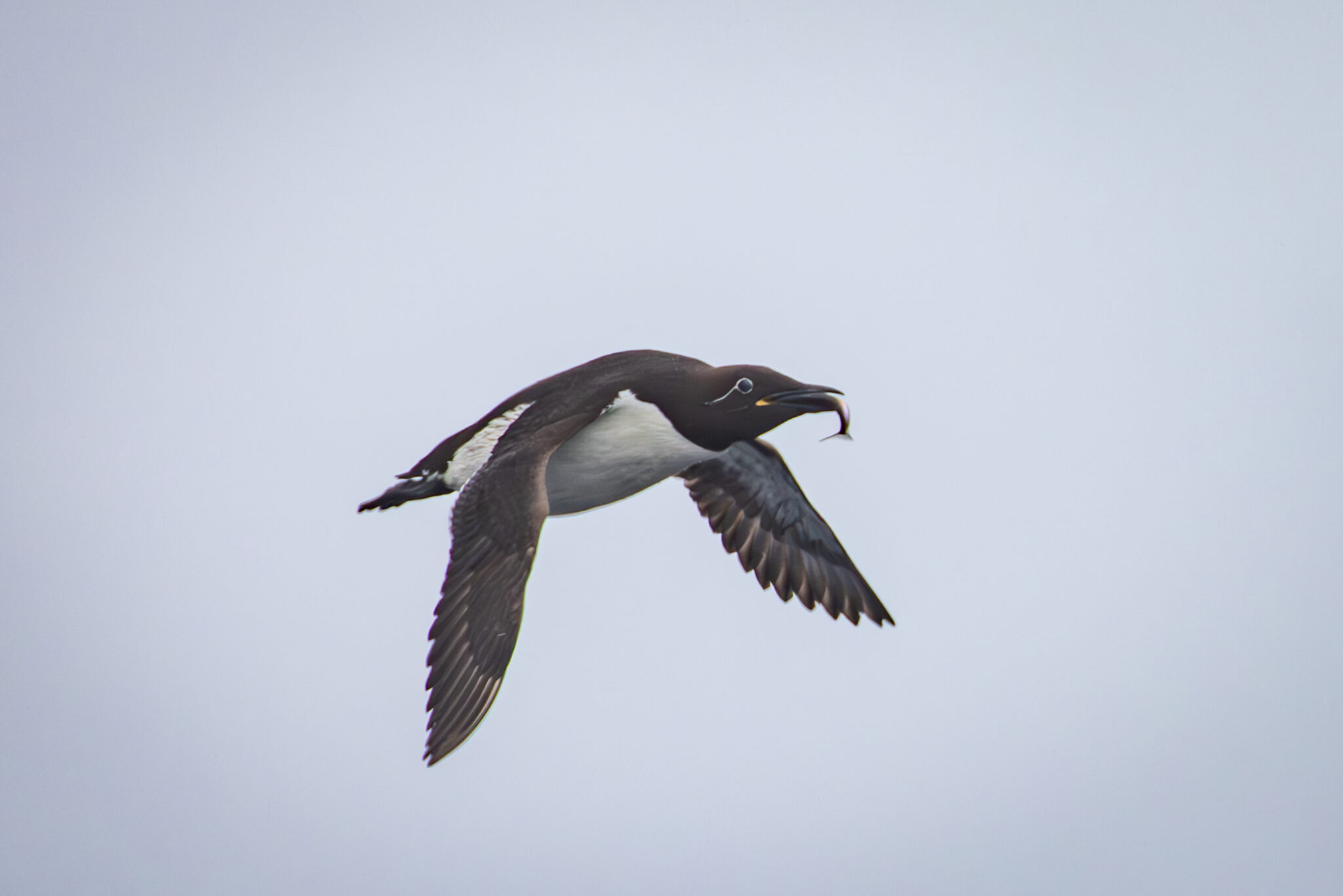
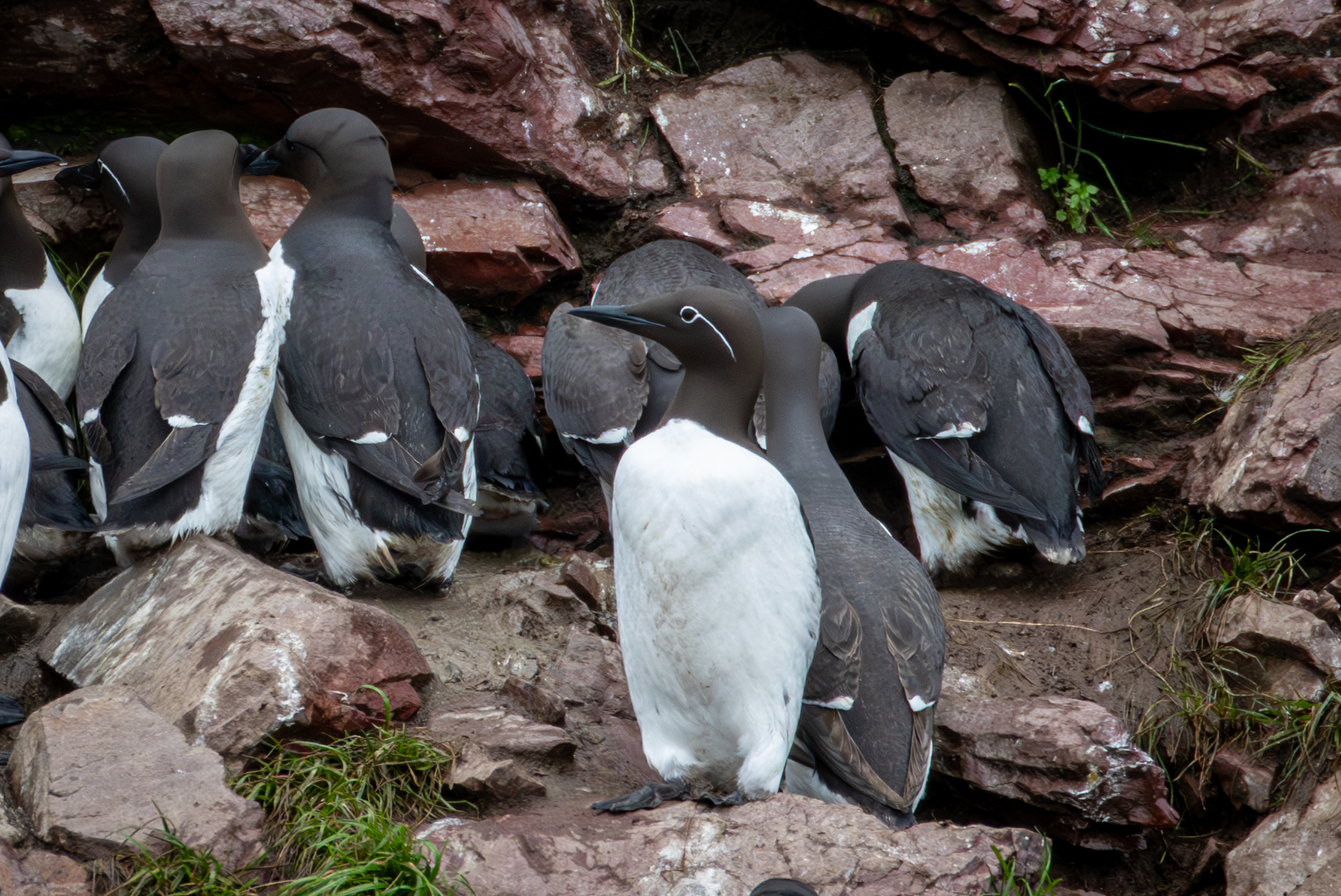
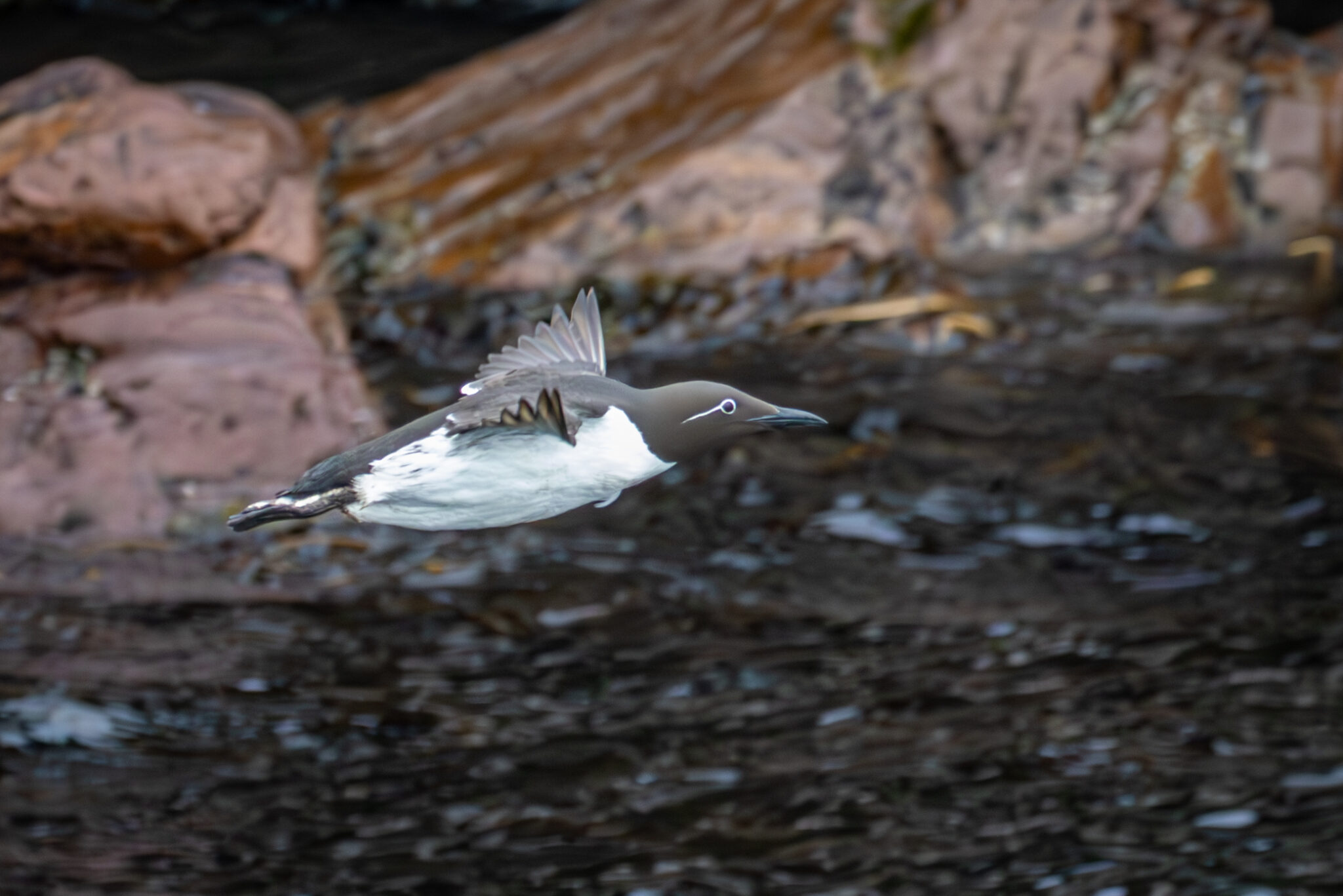
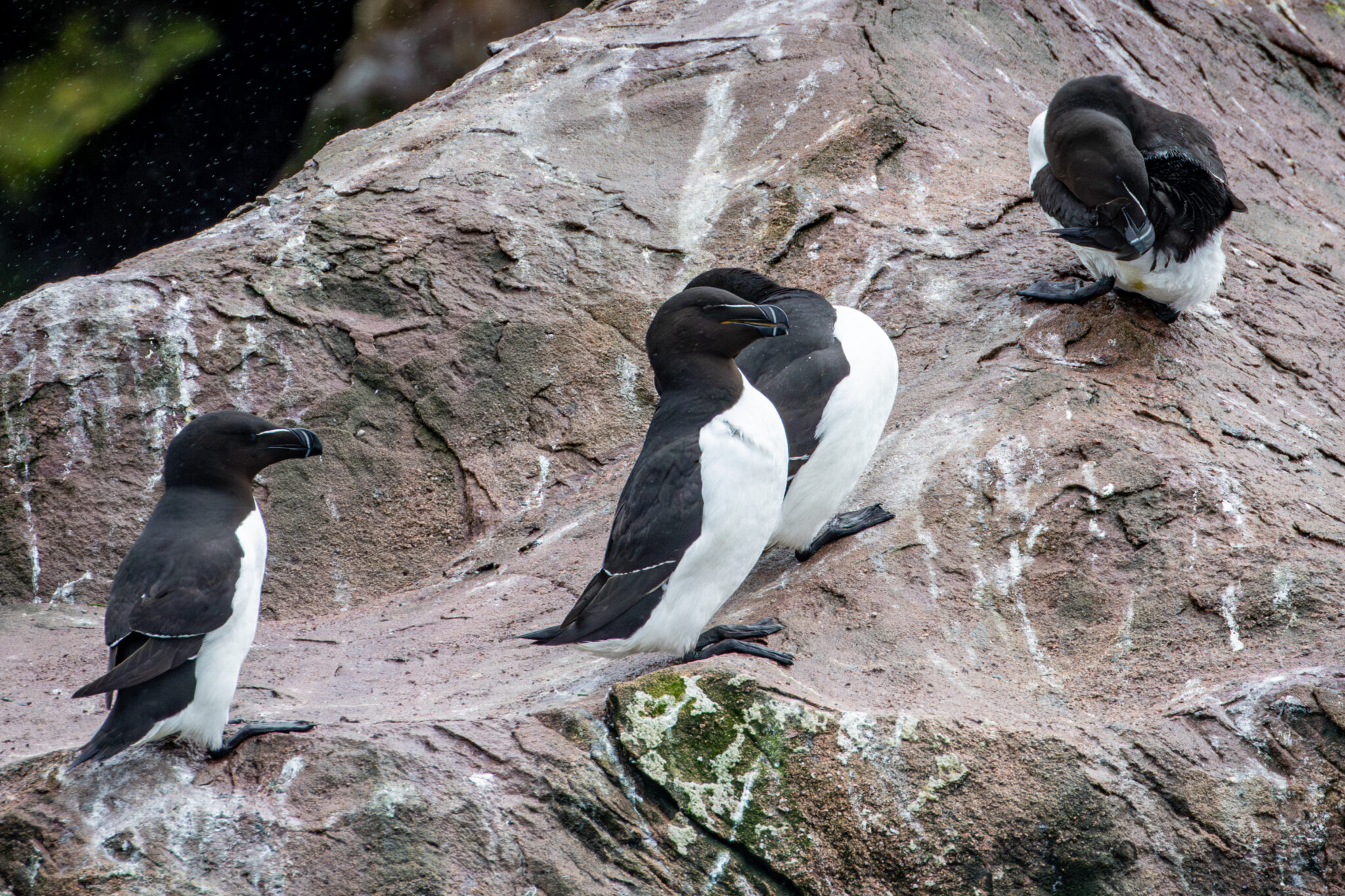
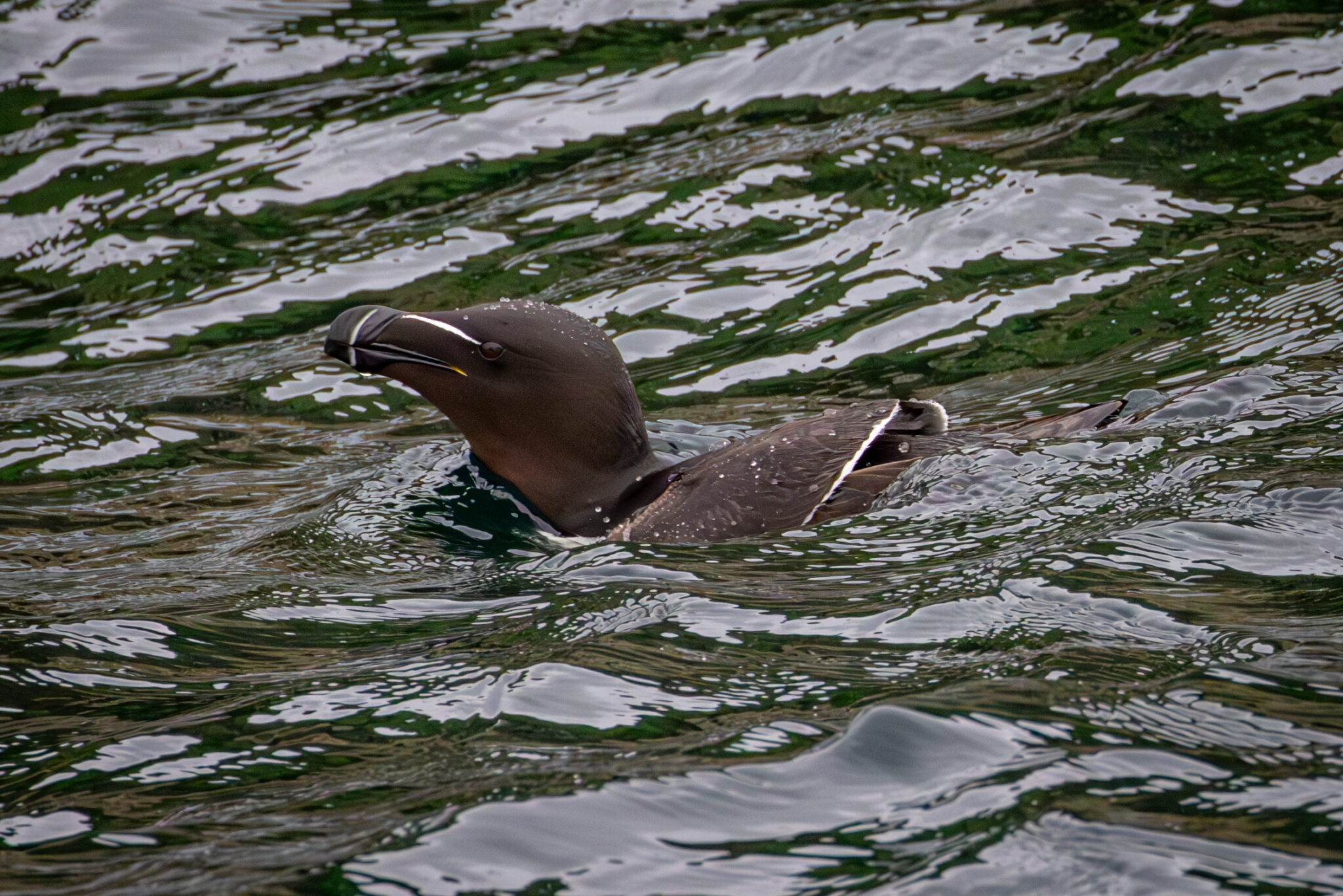
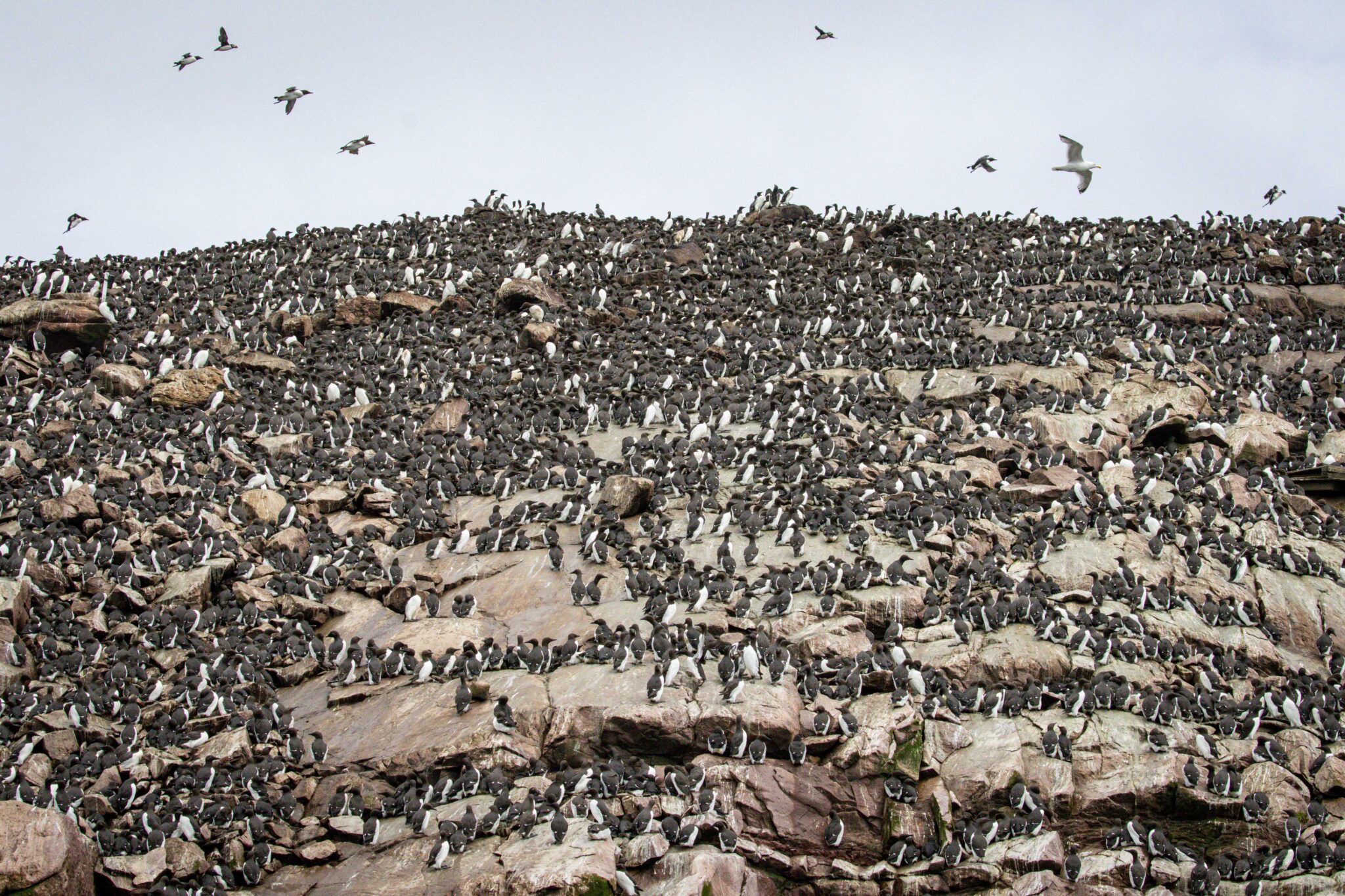
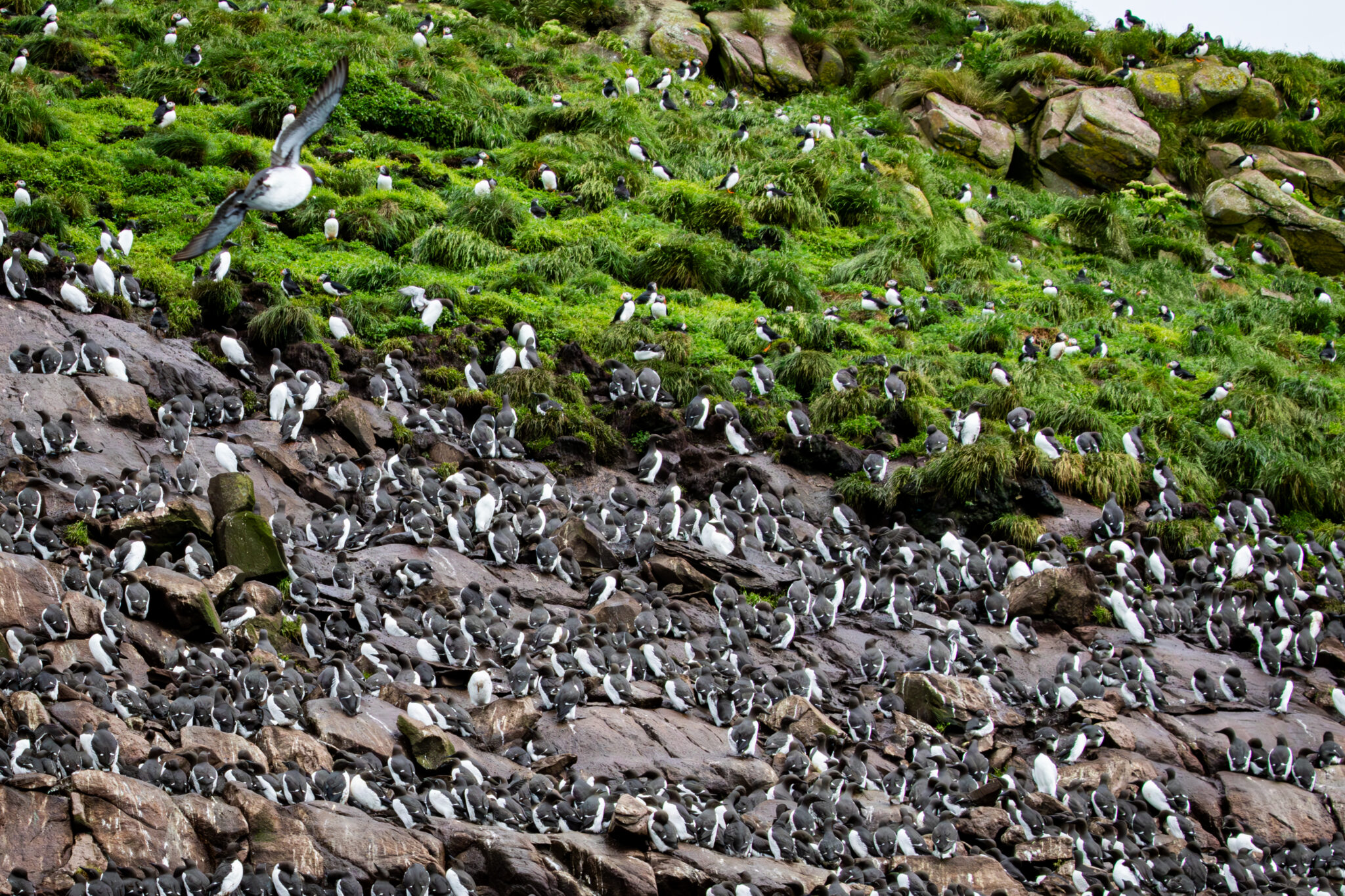
Great photos! What an incredible experience!